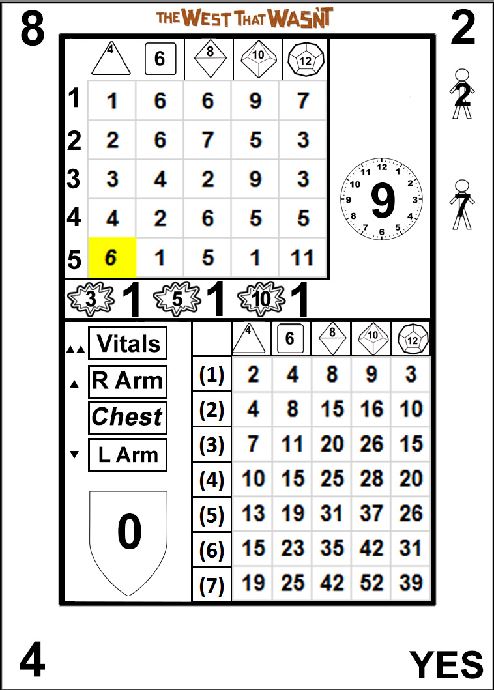Future Imperfect - Initiative and Action Speeds
Whenever the game enters action time, speed and order of operations become important. Future Imperfect classifies actions in one of four speed categories: Fast, Normal, Slow and Very Slow. Action speeds are used to determine which actions happen first in each round. The initiative system has more on how to use action speeds to determine action sequence.
Contents
Determining Action Speed
Characters may combine actions in a round, but no matter how many actions a character attempts the character has a single action speed for the round. This speed is equal to the slowest of the actions attempted. There are some exceptions to this.
Fast actions count as normal actions when combined with any other action. Very slow actions may not be combined with any other action. Any action beyond the second counts as one step slower than normal. When determining speed of more than two actions, place the slowest action last.
Examples: Chuck wishes to fire his Blast MMG, which is a very slow action. He may not combine this with any other action.
Sid Scorpio is running and firing his laser pistol, both of which are fast actions. Because they are combined with other actions, each counts as a normal action. His action speed for the round is normal.
Kayla Argent declares she will run (fast), make a martial jab attack (fast) and draw her stun baton (normal). Her two fast attacks count as normal, and her third action counts as slow. Her action speed is slow.
Free Actions
Some actions are so quick that they are determined to be free. Each character may do one free action per round. Any further free actions count as a fast action.
Action Speed List
Use a skill - Slow/Normal - May take a -2 penalty to use a skill at normal speed.
Extended action - Very Slow
Use item - by item
Ranged weapon - by weapon type
Hand to hand weapon - by weapon
Brawl - Normal
Martial Arts - Special - Defined by art/maneuver type
Move/Athletics - Normal
Run - Fast
Talk - Free
Initiative
In action time it is often important which actions occur first. The order of actions is determined by the initiative system.
Phases and Round Timing
Each action round is divided into four phases. All actions in the first phase occur before any actions in the second phase. After all four phases have resolved the round is over, and if necessary a new one is begun.
Simple Initiative
In the simple initiative system, actions are ordered by speed: all fast actions go in phase 1, all normal in phase 2 etc. Order within phases is determined by Reflex die type, then number of dice. If multiple characters remain tied their actions occur simultaneously.
Determining Initiative
The following section describes the advanced initiative system. This involves two steps: declaration and resolution.
Declaration
At the beginning of the round, all characters that are participating in the action declare their intentions. Declarations occur in reverse order of Reflex. Ties are broken in favor of the Crew, if two Crew members are tied they can determine who declares first in whatever method they choose. When declaring actions, note the action speed for the character. This will be needed in the next step.
Resolution
Each action card has an initiative bar on the left outer edge.
The key is marked on the top set of squares.
The key tells which square is used to determine the initiative number. For example, if the declared action is running, that is a fast action. According to the key, fast actions are in the upper left box (the F). Only the numbers in this box are relevant to the given action. The number is the TN to act in that phase.
To determine when the action occurs, check Reflexes. Compare the number to the given TN. The character can choose to act in any phase where their Reflex check meets or exceeds the TN. In the given key, a fast action would resolve in phase 1 on a 7+, phase 2 on a 5+, phase 3 on a 3+ and phase 4 on a 1+. If it were instead a slow action the TNs would be 11, 9, 5, 2 respectively.
If a character does not generate a TN high enough to go in phase 4, the character hesitates and does not go this round. If the character chooses to do the same action again next round his action is considered one speed category faster.
Example: Antares Darkeye is attempting to escape from two IPA officers with laser pistols. Antares has 2d10 Reflexes, while the IPA officers each have 2d6. The officers must declare first. Each declares that they will attempt to blast Antares (fast action). Antares declares his intention to run and duck around a corner before they can do so (fast action). The initiative card is drawn and Antares gets 4...rats, he goes in phase 3. Luckily for him, the officers get CF. They hesitate and he gets around the corner before they can react!

